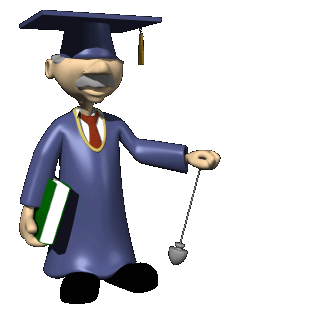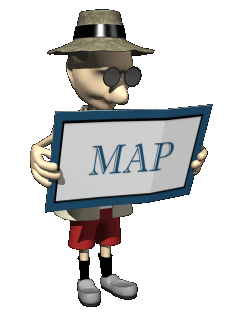Beginning this year, the College Board will be replacing their AP Physics B algebra-based physics course with two separate algebra-based physics courses, titled AP Physics 1 and AP Physics 2. The two calculus-based courses, AP Physics C: Mechanics and AP Physics C: Electricity and Magnetism, will remain the same.
Why the Change?
So  what does this change entail, and why has this change been undertaken? A study by the National Research Council concluded that the AP Physics B course “encourages cursory treatment of very important topics in physics rather than a deeper understanding,” according to the College Board’s FAQ, and that students’ study of mechanics should include rotational dynamics and angular momentum, which are not part of the AP Physics B curriculum. The NRC recommended teaching the course over two years to emphasize inquiry-based instruction and deeper understandings. The College Board agreed.
what does this change entail, and why has this change been undertaken? A study by the National Research Council concluded that the AP Physics B course “encourages cursory treatment of very important topics in physics rather than a deeper understanding,” according to the College Board’s FAQ, and that students’ study of mechanics should include rotational dynamics and angular momentum, which are not part of the AP Physics B curriculum. The NRC recommended teaching the course over two years to emphasize inquiry-based instruction and deeper understandings. The College Board agreed.
What’s Involved?
The new AP Physics 1 course is targeted as equivalent to a one-semester college course in algebra-based physics, though the selection of topics for the course includes some irregularities compared to a standard introductory college physics course. Topics included in AP Physics 1 include kinematics; dynamics; momentum; work, energy, and power; rotation; oscillations; gravity; mechanical waves; and basic electric circuits. Most of these are topics that were previously on the AP-B exam, though the inclusion of rotation and angular momentum are new topics. Further, the emphasis on mechanics in an introductory college course is standard, but the inclusion of electric circuits is rather irregular. According to a committee member involved in the redesign of the course, the inclusion of circuits was forced into the new course to meet the needs of end-of-year state assessments for several large states, and was not originally part of the redesign plans.
The new AP Physics 2 course is intended as an equivalent to a second-semester college course, covering fluid mechanics, thermal physics, electricity and magnetism, optics, and atomic / modern physics. Most of these topics were included in the previous AP-B course, though the modern physics portion of the course includes several new sub-topics.
A New Paradigm
Considerably more dramatic than just shifts in content, however, is the overall organization of the course. The new AP–1 and AP–2 courses are organized around seven “big ideas” in physics, coupled with an extensive list of essential knowledge (EK) and learning objectives (LOs) details what students should know and be able to do. Although these EKs and LOs are numerous, they are also quite vague in terms of how “deeply” students are expected to know a topic. As an example, several learning objectives discuss an understanding of springs in various contexts, but whether that also includes combinations of springs is left significantly vague. In the thermal physics arena, heat engines are not specifically covered, but students are expected to understand energy transfer in thermodynamic systems (which could be tested in the context of a heat engine). If it sounds a bit vague, I can’t disagree. Teachers across the country are also struggling to interpret the documentation about the new exams.

Also of interest is the focus on science practices. In addition to the 7 big ideas, the College Board has also identified 7 science practices that are essential for success. These practices are broken down in detail, with course activities designed to verify students can “use mathematics appropriately” and “plan and implement data collection strategies in relation to a particular scientific question,” for example. My detailed breakdown of the course curriculum frameworks can be found on the AP1 Roadmap and AP2 Roadmap documents.
Ultimately, the goal of these changes is to provide an opportunity for students to develop a deeper understanding of the underlying foundational concepts in physics as well as the skills and practices necessary to treat physics as a science activity instead of a body of knowledge, better preparing students for success in further coursework as well as careers in science and engineering.
A New Exam
In late spring / early summer, the College Board released a secured practice exam to certified AP Physics teachers to better prepare for the new AP–1 and AP–2 exams. The change in style of the exam is quite significant. Questions place a strong emphasis on relational and conceptual problem solving, as well as application of the science practices, coupled with a significant decrease in “math-only” quantitative solutions. The new exam also emphasizes symbolic manipulation, analyzing situations from multiple perspectives, designing experiments, justification of answers, and scientific argumentation.
Many of these changes are directly in line with the Modeling Physics method of instruction, which emphasizes ongoing guided inquiry while maintaining consistency in approach and building upon previously-developed models throughout the course, a method strongly recommended by current Physics Education Research.
Although the changes to the courses are numerous, the general message to teachers and students is consistently clear: physics is something you do, not something you know. Success in the new AP–1 and AP–2 courses requires a multi-faceted approach to learning which includes hands-on inquiry and exploration activities, mastery of content and problem-solving principles, and the ability to reason, argue, and justify scientifically.
How To Succeed
So then how do students succeed in this brave new world? I would humbly recommend a learning plan which includes an ongoing cycle of exploration, refinement, and application. As students work through each unit/topic/model, begin with an opportunity to active explore the model, determine what is known, what is unknown, and what misconceptions might exist. Follow that up with activities that allow students to refine their knowledge through the collection and analysis of data, drawing their own conclusions to discuss and debate. Finally, these conclusions and skills need to be transferred and applied to new and unique situations, allowing students to determine where these models work, and where they fall short (setting the stage for development of the next model!)
Supplemental Resources
It sounds daunting, but there are tons of great resources available to help students succeed in these endeavors. Besides reading the textbook, a skill which is difficult to master yet extremely valuable, a review of the key material distilled down into a clean easy-to-understand format can be invaluable. I have been teaching online courses with the use of video since 2003, so please let me be clear, I absolutely do not believe in passive instruction by video. A little bit of me dies inside everytime I read about classes in which students are placed in front of a computer as the sole means of instruction. Besides being ineffective, how boring! Physics is supposed to be fun, and I have trouble imagining how students can make it through such lonely, soulless courses.

I do, however, believe that supplemental on-demand video lessons taught by strong instructors such as those at Educator.com and my AP Physics Series at APlusPhysics.com can do wonders for cementing the foundational concepts and demonstrating application of these foundational concepts to problem solving, especially in the refinement and application stages of instruction. Undertaking learning through inquiry and modeling can be messy and confusing. Having an online instructor there to assist in cleaning things up or explaining things in a different manner or from an alternate perspective can make a world of difference.
Further, review books such as AP Physics 1 Essentials are designed to assist in these stages of learning, not as a replacement for the oh-so-valuable active learning experiences, but rather as an easily accessible means of solidifying the basic relationships and concepts. I wrote AP1 Essentials to help students understand essential physical relationships in a manner that is straightforward and easy-to-read, leaving development of in-depth problem solving and lab work for the classroom, where they are most effective. A review book can’t help a student if it’s so complex the student won’t read it. Instead, the goal for this book was to create a resource that students would actually read and enjoy, and help them along their path to a deeper conceptual understanding.
Putting It All Together
There is no “one-stop shopping” or easy path to success in AP Physics 1 or AP Physics 2, and strategies that may have worked for the previous AP Physics B course may no longer be successful. Instead, these new courses are comprehensive learning experiences combining exploration, experimentation, application, and communication skills. Only by putting in the effort and struggling through the frustrations will students find their way to mastery of the course. But they don’t have to go it alone – these courses are designed around collaboration and teamwork, and there are great supplemental resources to help out as well.
 About the Author – Dan Fullerton is a physics instructor at Irondequoit High School in Rochester, NY, and an adjunct professor of microelectronic engineering at Rochester Institute of Technology. He was named a NY State Master Physics Teacher in 2014. Fullerton is featured in the AP Physics C and AP Physics 1 & 2 video courses on Educator.com. He is the author of AP Physics 1 Essentials and creator of the APlusPhysics.com website. Fullerton lives in Webster, NY, with his beautiful wife, two indefatigable daughters, and sleepy dog.
About the Author – Dan Fullerton is a physics instructor at Irondequoit High School in Rochester, NY, and an adjunct professor of microelectronic engineering at Rochester Institute of Technology. He was named a NY State Master Physics Teacher in 2014. Fullerton is featured in the AP Physics C and AP Physics 1 & 2 video courses on Educator.com. He is the author of AP Physics 1 Essentials and creator of the APlusPhysics.com website. Fullerton lives in Webster, NY, with his beautiful wife, two indefatigable daughters, and sleepy dog.
